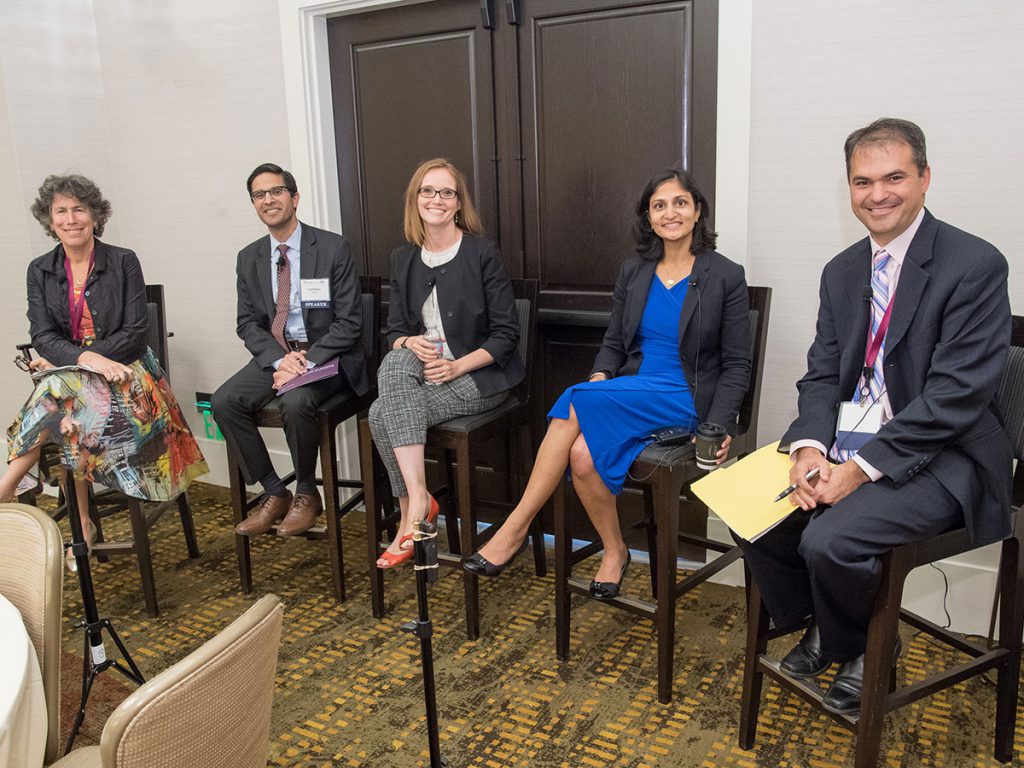Population Health
Blog Post
Improving Population Health
An LDI 50th Anniversary Symposium Panel

Many discussions surrounding population health initiatives take place at a very high level, resulting in few tangible action items for stakeholders to address. This was not the case at LDI’s 50th Anniversary Symposium, where the breakout session titled “Strategies to Advance Population Health” proposed new approaches to old challenges. The session focused on ways to integrate clinical and non-clinical services, examined policies promoting health, and encouraged unique partnerships and opportunities for strategic innovation. Dave Grande of the University of Pennsylvania moderated the session, and panelists included Nicole Lurie, disaster relief expert formerly of the U.S Department of Health and Human Services, Meena Seshamani, Clinical Performance Improvement Director at MedStar Health, Dawn Alley, Acting Deputy Director of the Preventative and Population Health Care Models at the Centers for Medicare and Medicaid Innovation, and Giridhar Mallya, Senior Policy Officer of the Robert Wood Johnson Foundation.
Grande began the session by asking the panelists to explain what population health means to them, and how their respective organizations are working to sustain improvements in it. Seshamani pointed out that, as a hospital executive, population health for her means transforming her hospital system into a health system, with a focus on ambulatory care and social needs of patients. Alley agreed, and added that one huge step for Medicare has been extending coverage of preventative services, such as the CDC’s Diabetes Prevention Program. And all panelists agreed that, to sustain population health improvements, researchers, clinicians, and policymakers must do better in connecting, sharing ideas, and translating evidence into practice.

(Left to right) Nicole Lurie, Giridhar Mallya, Dawn Alley, Meena Seshamani, David Grande
The conversation then turned to recommendations from the panelists to organizations seeking to sustain improvements in population health. Mallya emphasized the importance of community benefits partnerships, especially those integrating clinical and non-clinical services. As an example, he cited the recent partnership between the City and Children’s Hospital of Philadelphia that led to a South Philadelphia center with clinics, a library, and a recreation center in one space. Lurie, a noted expert in disaster relief, discussed the possibility of disaster-afflicted areas becoming sites of targeted population health interventions. For example, when rebuilding houses in Houston after Hurricane Harvey, why not center those houses around community-based resources? If these areas are already being rebuilt from the ground up, she noted, they present excellent opportunities for population health innovation.
The audience also shared in the session’s theme of developing reasonable goals and action steps for improving population health. One participant noted the role of home care in transitioning the health care system from one that is hospital-based to one that is community-based. Seshamani vehemently agreed, noting that funders must shift their dollars from care in the hospital to care in the community to see real improvements in population health. Another audience member posited the role of urban universities in improving the health of lifelong city residents. Lurie shared a potential idea – such universities can create hot-spot maps of where their low-income workers live, target these areas for innovation, and hire their current employees to serve as Community Ambassadors. The audience took well to this idea, and discussion continued as the session concluded. The energy of this group, along with many other breakout sessions throughout the two-day conference, characterized the 50th Anniversary Symposium, and set the stage for LDI’s next half-century.